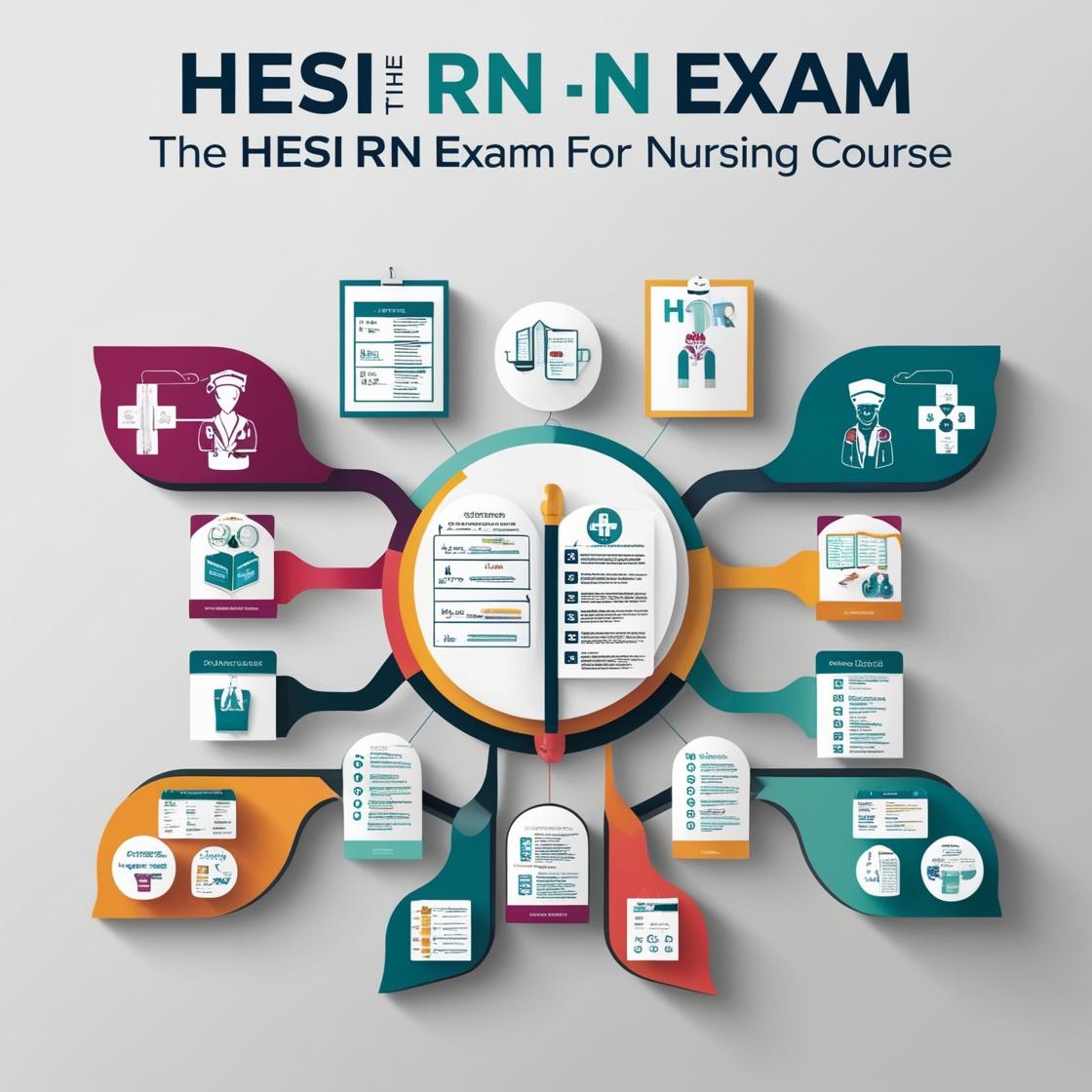HESI RN
HESI Medical Surgical Assignment Exam
1. A client who is mouth breathing is receiving oxygen by face mask. The nursing assistant asks the nurse why a water bottle is attached to the oxygen tubing near the wall oxygen outlet. The nurse responds that the primary purpose of the water is to:
- A. Prevent the client from getting a nosebleed
- B. Give the client added fluid by way of the respiratory tree
- C. Humidify the oxygen that is bypassing the client’s nose
- D. Prevent fluid loss from the lungs during mouth breathing
Correct answer: C
Rationale: The purpose of the water bottle is to humidify the oxygen that is bypassing the nose during mouth breathing. When a client breathes through the mouth, the oxygen delivered by the face mask bypasses the natural humidification provided by the nasal passages. Therefore, the water bottle attachment helps to add moisture to the oxygen, preventing dryness and irritation to the respiratory tract. Choices A, B, and D are incorrect. Clients breathing through the mouth are not at risk for nosebleeds, do not receive added fluid through the respiratory tree, and do not experience fluid loss from the lungs due to mouth breathing.
2. The nurse is caring for four clients with chronic kidney disease. Which client should the nurse assess first upon initial rounding?
- A. Woman with a blood pressure of 158/90 mm Hg
- B. Client with Kussmaul respirations
- C. Man with skin itching from head to toe
- D. Client with halitosis and stomatitis
Correct answer: B
Rationale: The correct answer is B. Kussmaul respirations indicate a worsening of chronic kidney disease (CKD). The client is increasing the rate and depth of breathing to excrete carbon dioxide through the lungs, a compensatory mechanism for metabolic acidosis common in CKD. Hypertension, as in choice A, is a common finding in CKD due to volume overload and activation of the renin-angiotensin-aldosterone system. Skin itching, as in choice C, is related to calcium-phosphate imbalances seen in CKD. Halitosis and stomatitis, as in choice D, are common in CKD due to uremia, leading to the formation of ammonia. However, Kussmaul respirations indicate a more urgent need for assessment as they suggest impending respiratory distress and metabolic derangement, requiring immediate attention.
3. A healthcare professional assesses clients on the medical-surgical unit. Which client is at greatest risk for the development of bacterial cystitis?
- A. A 36-year-old female who has never been pregnant
- B. A 42-year-old male who is prescribed cyclophosphamide
- C. A 58-year-old female who is not taking estrogen replacement
- D. A 77-year-old male with mild congestive heart failure
Correct answer: C
Rationale: Females are at higher risk of developing bacterial cystitis due to their shorter urethra compared to males. Postmenopausal women not on estrogen replacement therapy are particularly susceptible to cystitis because of changes in vaginal and urethral cells. This increases the risk of bacterial infection. The other options do not have the same level of risk as the postmenopausal woman not using hormone replacement therapy. A never-pregnant middle-aged woman does not have the same increased risk as a postmenopausal woman with hormonal changes.
4. After educating a client with hypertension secondary to renal disease, the nurse assesses the client’s understanding. Which statement made by the client indicates a need for additional teaching?
- A. I can prevent more damage to my kidneys by managing my blood pressure.
- B. If I have increased urination at night, I need to drink less fluid during the day.
- C. I need to see the registered dietitian to discuss limiting my protein intake.
- D. It is important that I take my antihypertensive medications as directed.
Correct answer: B
Rationale: Choice B is incorrect because the client should not restrict fluids during the day due to increased urination at night. Clients with renal disease may be prescribed fluid restrictions, and they should be thoroughly assessed for potential dehydration. To decrease increased nocturnal voiding, clients should consume fluids earlier in the day. Choices A, C, and D are correct statements. Managing blood pressure is crucial to slow the progression of renal dysfunction. Limiting protein intake is important in renal disease management, and clients should be referred to a dietitian as needed. Taking antihypertensive medications as directed is essential for blood pressure control.
5. A client without a history of respiratory disease has a pulse oximeter in place after surgery. The nurse monitors the pulse oximeter readings to ensure that oxygen saturation remains above:
- A. 85%
- B. 89%
- C. 95%
- D. 100%
Correct answer: C
Rationale: Pulse oximetry is a noninvasive method of continuously monitoring the oxygen saturation of hemoglobin (SaO2). In the absence of underlying respiratory disease, the expected oxygen saturation level is at least 95%. Oxygen saturation levels below 95% may indicate hypoxemia, which can compromise tissue perfusion and oxygen delivery to vital organs. Therefore, maintaining oxygen saturation above 95% is crucial to ensure adequate oxygenation post-surgery. Choices A, B, and D are incorrect as they represent oxygen saturation levels that are below the expected value for a client without a history of respiratory disease, which should be at least 95%.
Similar Questions

Access More Features
HESI RN Basic
$69.99/ 30 days
- 50,000 Questions with answers
- All HESI courses Coverage
- 30 days access @ $69.99
HESI RN Premium
$149.99/ 90 days
- 50,000 Questions with answers
- All HESI courses Coverage
- 30 days access @ $149.99
